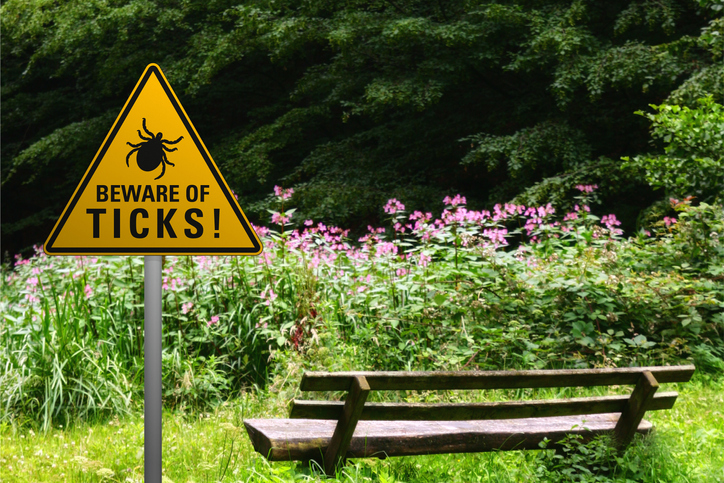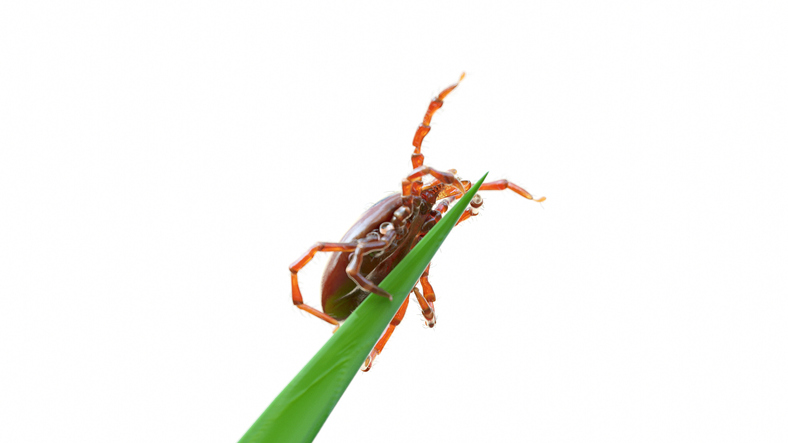Be Proactive About Lyme Disease

By Joy Stephenson-Laws, J.D., Founder
As a professional athlete in a highly competitive sport, 28-year-old golfer Sophia Popov has had her share of ups and downs on the greens. But perhaps one of her biggest battles was being diagnosed with lyme disease.
You may already know that lyme disease comes from a tick bite. It can cause very uncomfortable symptoms, including fever, headache, fatigue and a skin rash. If left untreated, and it often does because the afflicted may not realize that they were bitten by a tick or confuse their symptoms for other conditions, lyme disease can spread to the joints, heart and nervous system.
About a year ago, pop star Justin Bieber shared that he had lyme disease.
If treated early, lyme disease can usually be treated with antibiotics. But as mentioned, it is not always caught early. Lyme disease that is not treated earlier can also be treated with antibiotics, however, some people may suffer from lingering symptoms.
It took years for Popov to finally receive a diagnosis for lyme disease.

“My rookie year, I started having a lot of health issues, and honestly we didn’t even know what it was. It took a total of about 20 doctor visits three years later to figure out that I had Lyme disease,” she shared in one report.
“At that point it was so chronic, though, that I had just been struggling a lot with fatigue, and honestly, I had like 10 different symptoms and it was just very…it was a tough time to go through just because I didn't know what it was, and it took so long to pinpoint exactly what was going on.”
She also said that antibiotics alone were “not going to do the job” and knew that she had to take a more natural approach. This natural approach included eating a nutrient-dense, plant-based diet.
Although the only known treatment for lyme disease are antibiotics, it is definitely important to fuel the body with nutrient-dense foods such as fruits and vegetables. Eating these healthy foods reduces inflammation in the body and helps the immune system do its best job at fighting off an infection.
Furthermore, it is absolutely imperative to replenish the nutrients, such as magnesium and vitamins C and D, antibiotics deplete from the body when you take them. Antibiotics can also wreak havoc on the gut microbiome, the community that consists of the trillions of microbes that live in the stomach and intestines.
Some people with lyme disease may have to take antibiotics for as long as a month, so it is especially important to eat healthy, nutritious foods and make sure that you are getting plenty of prebiotics and probiotics.
It is also very important to take routine nutrient tests in order to definitively determine if you have any nutritional deficiencies or imbalances. The truth is that most of us do! If you have a deficiency or imbalance, a competent healthcare professional can work with you on making the necessary dietary changes and recommend quality supplements if necessary.
Cryotherapy for lyme disease.
To be clear, cryotherapy cannot cure lyme disease, however, it may help manage it by helping reduce inflammation that can occur from lyme disease infection.
Also called ‘cold therapy’ or ‘cold treatment,’ cryotherapy involves exposing the body to extremely cold temperatures (usually below negative 200 degrees Fahrenheit). Think of it as a fancy ice bath!
The theory behind cryotherapy is that freezing temperature experienced by your body sends signals to the brain which in turn triggers an emergency or survival mode. This causes the body to constrict the blood flow in the outer layers and send the blood supply to the innermost vital organs.
While in this “emergency survival mode,” the body strives to protect the more critical organs like the heart and cares less about the extremities like the fingers. All of the body’s resources are activated. The body’s ability to self heal is enhanced, because your blood is being enriched with additional oxygen, hormones, enzymes and nutrients - all of which are needed to survive under the extreme emergency created by the cryotherapy. Once you leave the cold environment, the newly enriched and less-toxic blood is flushed back into the rest of the body.
Celebrity Yolanda Hadid, who has had a very tough battle with lyme disease, used cryotherapy to help her manage with her illness.
Again, cryotherapy is not a cure for lyme disease, but when it comes to battling illnesses we sometimes have to look beyond the usual recommendations and educate ourselves about resourcesavailable to you that can help you be proactive and take ownership of your health, happiness and wellness.
To learn more about cryotherapy, click here. And read here for ways that you can help prevent lyme disease.
Enjoy your healthy life!
Disclaimer: This article is not intended to provide medical advice. Please consult with your doctor or another competent healthcare practitioner to get specific medical advice for your situation.
The pH professional health care team includes recognized experts from a variety of health care and related disciplines, including physicians, attorneys, nutritionists, nurses and certified fitness instructors. This team also includes the members of the pH Medical Advisory Board, which constantly monitors all pH programs, products and services. To learn more about the pH Medical Advisory Board, click here.







